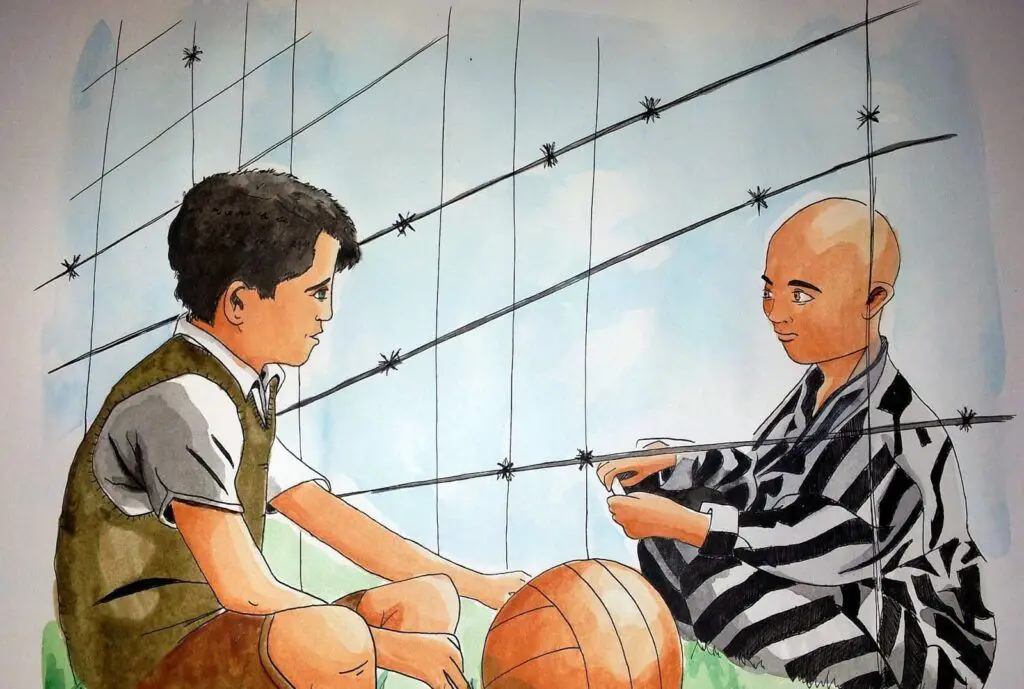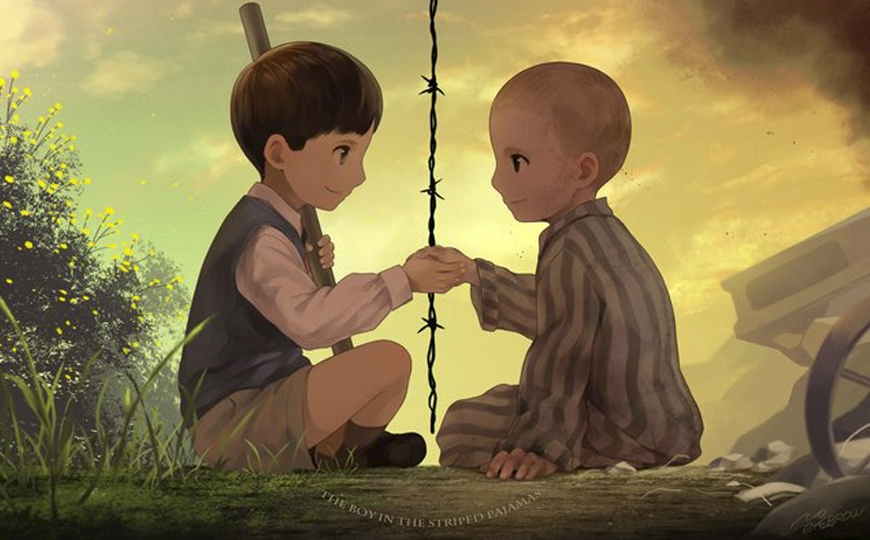Imagine a world where innocence collides with the stark reality of wartime atrocities. John Boyne’s poignant novel, The Boy in the Striped Pajamas, takes us on a harrowing journey into the heart of this conflict, exposing the depths of human cruelty and the enduring power of childhood friendship. Published in 2006, the book quickly captured the attention of readers worldwide, sparking passionate discussions and leaving an indelible mark on the literary landscape.

Image: horadelrecreo.com
The Boy in the Striped Pajamas is more than just a historical fiction story; it’s a powerful exploration of the human condition. It examines the complexities of prejudice, the fragility of innocence, and the devastating consequences of war. The novel’s impact lies in its ability to transcend time and speak to the universal emotions we all share: love, loss, and the yearning for connection.
The Innocence of a Boy
The story unfolds through the innocent eyes of Bruno, a young boy living in Nazi Germany. As the son of a high-ranking Nazi officer, Bruno is oblivious to the horrors of the war and the systematic persecution of Jews. He lives a privileged life, surrounded by servants and the trappings of power. However, his world is shattered when his family is abruptly relocated to a remote, secluded location called “Out-With.”
Bruno’s curiosity is piqued by the strange fence surrounding the compound, and his interactions with the “people in striped pajamas” behind it begin to challenge his naive understanding of the world. The novel delves into Bruno’s childlike logic, his naivety in questioning the authority of his parents, and his unwavering sense of empathy towards the Jewish prisoners.
The Power of Friendship
Through a series of clandestine encounters, Bruno forges an unlikely friendship with Shmuel, a young boy confined to the other side of the fence. Their bond transcends language, race, and social barriers, highlighting the deep-seated human need for connection and shared experiences. Bruno and Shmuel play together, share secrets, and comfort each other in their isolation. Their friendship becomes a testament to the power of human connection even amidst the direst circumstances.
The innocence of Bruno and Shmuel’s friendship stands in stark contrast to the cold, calculated cruelty that prevails in the camp. As the story progresses, the children’s playful interactions become increasingly poignant, as they symbolize the fragility of childhood and the enduring power of hope in the face of adversity.
Unveiling the Horrors of War
While Bruno remains largely unaware of the true nature of the “Out-With” compound, the reader is gradually introduced to the horrors of the Holocaust. We see glimpses of the camp’s brutal realities – the dehumanizing conditions, the constant fear, the arbitrary violence – through Bruno’s innocent eyes and Shmuel’s hushed tales of suffering. This juxtaposition of Bruno’s innocent worldview with the stark realities of the camp creates a powerful, often unsettling effect.
The novel doesn’t shy away from portraying the atrocities of the Holocaust, but it does so with a sense of restraint and nuance. We see the camp through the lens of Bruno’s perspective, allowing us to experience the gradual realization of the true horror of the situation. This approach makes the story even more impactful, as it forces us to confront the complexities of prejudice and the devastating consequences of systemic violence.

Image: historicoupress.upaep.mx
Exploring Themes of Prejudice and Injustice
The Boy in the Striped Pajamas explores the deeply rooted themes of prejudice and injustice. Through Bruno’s initially naive understanding of the world, the novel exposes the dangerous consequences of blind adherence to authority and the pervasive nature of societal biases. We see how even seemingly innocent children can be influenced by the prejudices of their parents and the social environment around them.
The novel’s central message is not only about the horrors of war, but also about the importance of questioning assumptions, challenging prejudice, and seeing the humanity in others. It reminds us that even in the darkest of times, there is always a flicker of hope, a chance for compassion and understanding.
The Boy in the Striped Pajamas: A Legacy of Impact
The Boy in the Striped Pajamas has become a modern classic, captivating readers of all ages. Its impact extends beyond the realm of literature, generating discussions and debates about the importance of historical awareness, empathy, and the consequences of prejudice. The novel has been adapted into a successful film, further amplifying its message to a global audience.
Though it is a fictional story, the novel’s characters and their journey resonate with readers on a personal level. It invites us to contemplate the nature of our own biases, the importance of empathy, and the enduring power of human connection even in the face of adversity. It reminds us that even the smallest acts of kindness can have a profound impact, and that even amidst the depths of human suffering, the power of hope and compassion can prevail.
El Nino Del Pijama A Rayas
A Call to Action
The Boy in the Striped Pajamas is a powerful reminder of the importance of learning from history, challenging prejudice, and fostering empathy. It encourages us to reflect upon our own beliefs and actions, and to strive for a world where understanding and compassion prevail. As readers, we have the power to use our voices to promote tolerance and to reject the forces of hatred. Let this story serve as a catalyst for meaningful dialogue, promoting awareness and understanding, and building a more just and equitable world for all.






